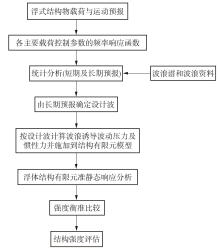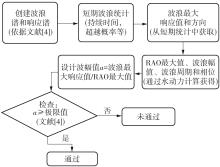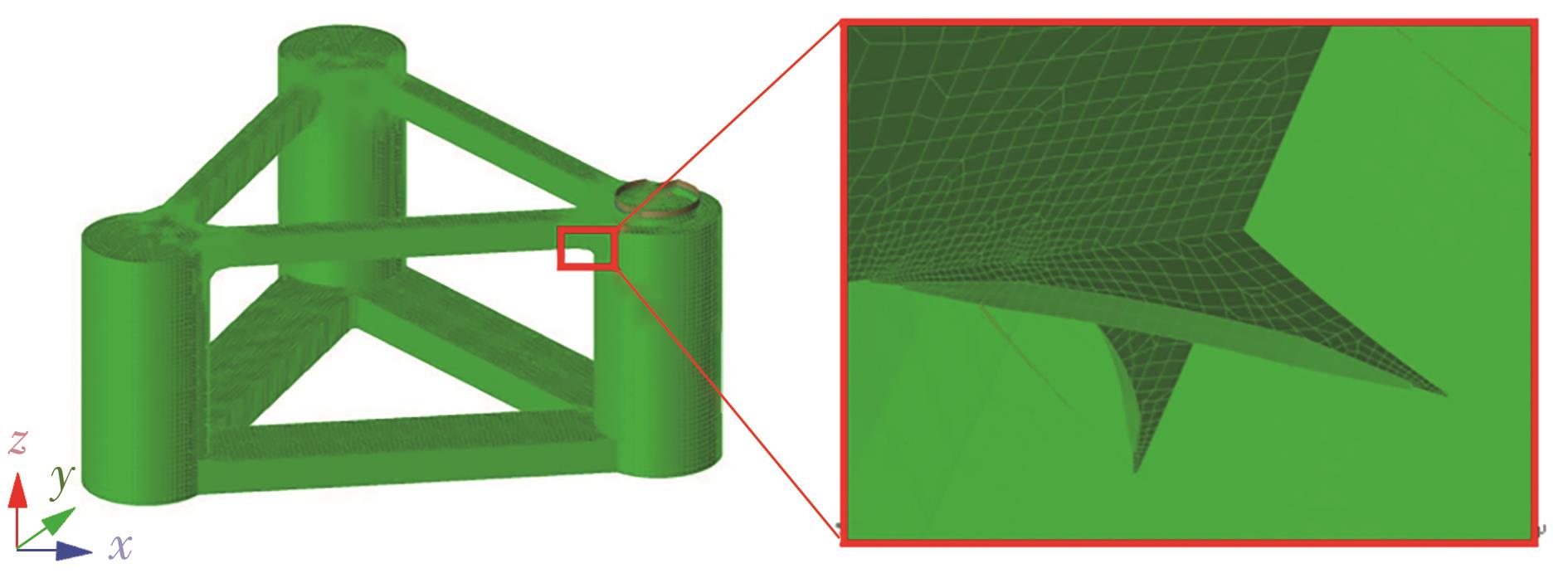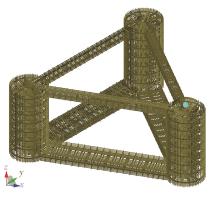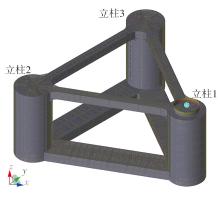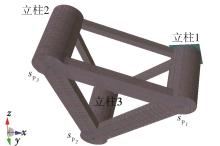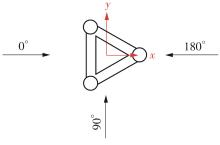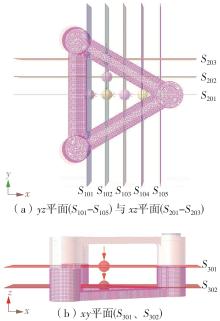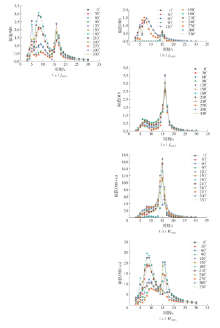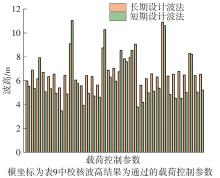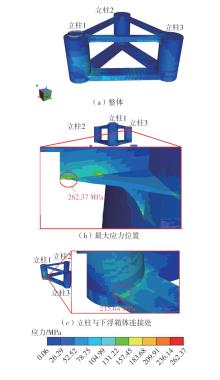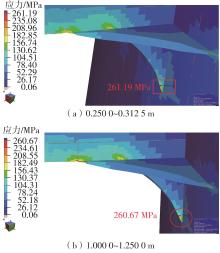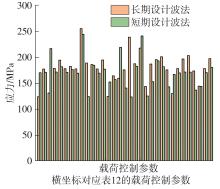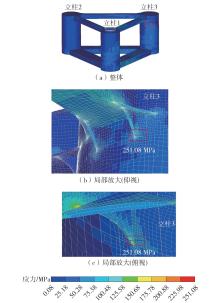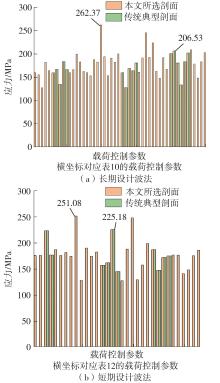| 1 |
RAVINTHRAKUMAR S, LEIRA B J, HAVER S, et al. Evaluation of extreme design wave loads for hull girder strength assessment[J].Trends in the Analysis and Design of Marine Structures,2019,2(1):23-30.
|
| 2 |
SOHN J M, CHEON H, HONG K,et al .Equivalent design wave approach for structural analysis of floating pendulum wave energy converter[J].Ships and Offshore Structures,2016,11(6):645-654.
|
| 3 |
LI H, REN H, WEI T, et al .Study on the Wave Loads and Strength Assessment Method on Semi-Submersible Platform[C]∥Proceedings of the 28th International Conference on Offshore Mechanics and Arctic Engineering.Honolulu:OMAE,2009:463-471.
|
| 4 |
Column-Stabilized unit:DNVGL-RP-C103—2015 [S].
|
| 5 |
DONG Y, ZHANG J, ZHONG S,et al .Simplified strength assessment for preliminary structural design of floating offshore wind turbine semi-submersible platform[J].Journal of Marine Science and Engineering,2024,12(2):259-276.
|
| 6 |
孙寅博,窦培林 .Truss Spar 结构浮式风机基础总体强度分析[J].舰船科学技术,2021,43(4):107-110.
|
|
SUN Yinbo, DOU Peilin .Overall strength analysis of truss spar floating wind turbine foundation[J].Ship Science and Technology,2021,43(4):107-110.
|
| 7 |
YANG Y, CHEN C, ZHAO W,et al .An innovative method of assessing yield strength of floater hull for semi-submersible floating wind turbine in whole life period[J].Ocean Engineering,2023,270:113679/1-16.
|
| 8 |
LIN J, WU W, PENG Z .Overall strength analysis of floating offshore wind turbine foundation[J].Journal of Physics:Conference Series,2023,2419(1):012017/1-10.
|
| 9 |
唐友刚,王涵,陶海成,等 .海上风机半潜型浮式基础结构设计及整体强度分析[J].中国造船,2013,54(3):85-93.
|
|
TANG Yougang, WANG Han, TAO Haicheng,et al .Structure design and global strength analysis for semi-submersible floating foundation of offshore wind turbine[J].Shipbuilding of China,2013,54(3):85-93
|
| 10 |
桑松,于梅,石晓,等 .基于设计波法的半潜型浮式风力机结构强度校核[J].太阳能学报,2019,40(1):185-191.
|
|
SANG Song, YU Mei, SHI Xiao,et al .Strength check on deep sea semi-submersible floating wind turbine based on design wave method[J].Acta Energiae Solaris Sinica,2019,40(1):185-191.
|
| 11 |
聂焱 .浮式风机基础结构强度设计[J].水电与新能源,2019,33(4):74-78.
|
|
NIE Yan .Structural strength design of the floating wind turbine Foundation[J].Hydropower and New Engegy,2019,33(4):74-78.
|
| 12 |
宋兆波 .大型浮式海上风机平台结构设计和动力特性研究[D].大连:大连理工大学,2022.
|
| 13 |
范文华,滕斌,丛培文,等 .准陷波现象对多柱平台特征内力影响的研究[J].中国海洋平台,2016,31(2):68-74.
|
|
FAN Wenhua, TENG Bin, CONG Peiwen,et al .Near-trapping effect on characteristic internal forces of the multi-cylinder platform[J].China Offshore Platform,2016,31(2):68-74.
|
| 14 |
方钟圣 .西北太平洋波浪统计集[M].北京:国防工业出版社,1996.
|
| 15 |
张朝阳 .深水半潜平台总体强度分析中波浪载荷计算与简化建模方法研究[D].上海:上海交通大学,2012.
|
| 16 |
中国船级社 .海上浮动设施入级规范[R].北京:人民交通出版社,2023.
|
| 17 |
廖海翔 .基于SVR的非结构网格变形技术研究[D].长沙:国防科技大学,2020.
|
| 18 |
SILVA De SO E, BERTHELSEN P A, ELIASSEN L,et al .Definition of the INO Windmoor 12 MW base case floating wind turbine[J].Sintef Ocean,2021,11(1):1-82.
|
| 19 |
BOGE S N, EKERHOVD D W .A hydro-aerodynamic analysis of a floating offshore wind turbine to assist in floater selection[D].Trondheim:NTNU,2022.
|
| 20 |
李红涛,邓贤锋 .半潜式平台整体结构设计的波浪载荷研究[J].中国海上油气,2015,27(2):98-103.
|
|
LI Hongtao, DENG Xianfeng .Study on wave loads for global structural design of semi-submersibles[J].China Offshore Oil and Gas,2015,27(2): 98-103.
|
| 21 |
梁双令,齐江辉,章红雨,等 .基于设计波法的海洋核动力平台波浪载荷计算[J].舰船科学技术,2019,41(7):90-94.
|
|
LIANG Shuangling, QI Jianghui, ZHANG Hongyu,et al .Wave loads calculation of marine nuclear power platform based on design wave methods[J].Ship Science and Technology,2019,41(7):90-94.
|
| 22 |
吉华宇 .深水半潜平台总体强度设计波分析方法研究[D].上海:上海交通大学,2019.
|
| 23 |
Structural design of offshore units- method:DNVGL-OS-C201—2017[S].
|
| 24 |
Wind turbines-Part 3-1,design requirements for fixed offshore wind turbines: [S].
|
| 25 |
Part 3-2:design requirements for floating offshore wind turbines: [S].
|
| 26 |
中国船级社 .海上浮式风机平台指南[R].北京:人民交通出版社,2021.
|
| 27 |
中国船级社 .海上浮式装置入级规范[R].北京:人民交通出版社,2020.
|
